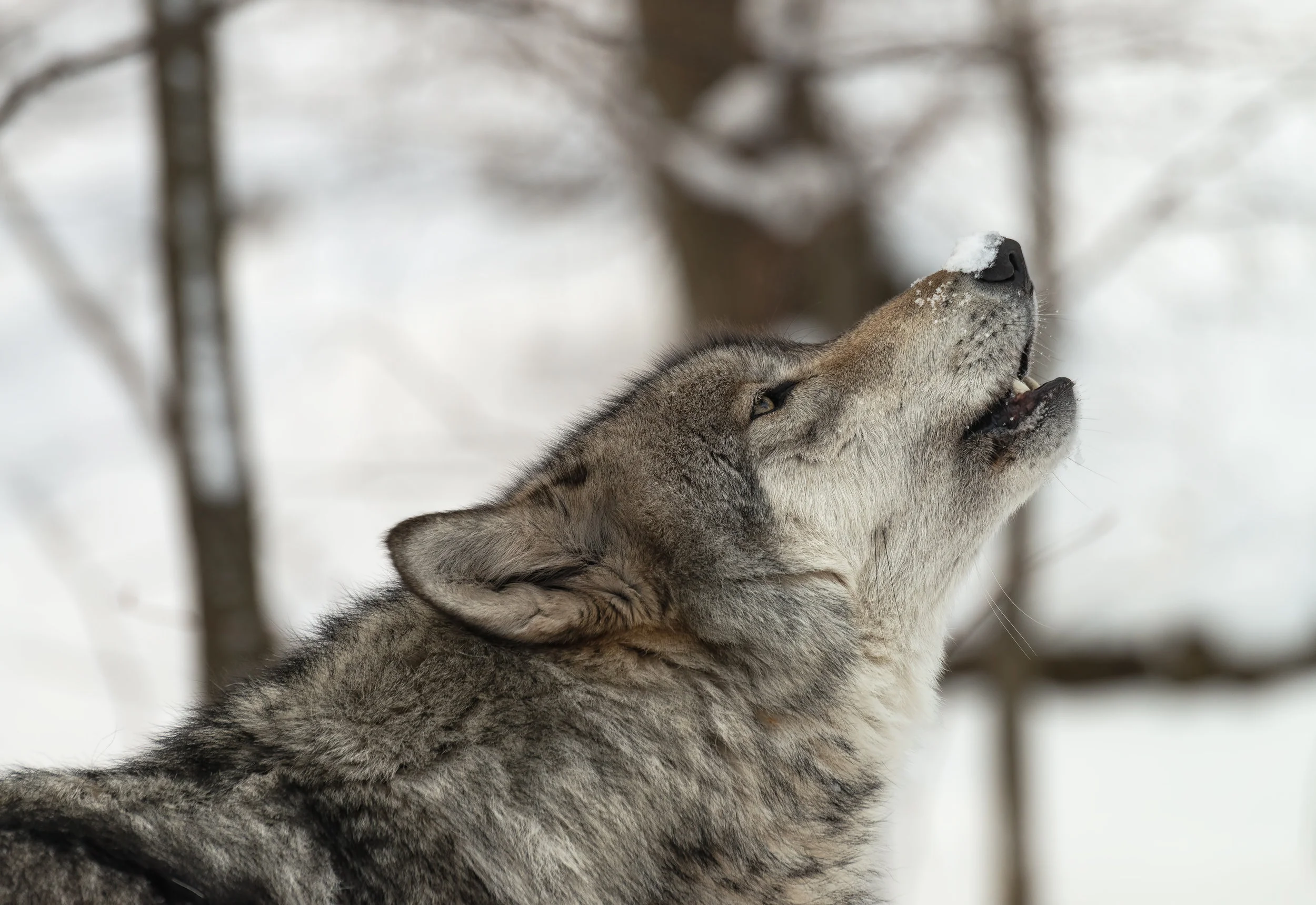Gray Wolf
"Forest Sentinel" by Esther van Hulsen (media)
“The wolf never ceases to fascinate me, and I would happily fill my career just painting and drawing these beautiful animals. There is no animal that calls out such strong emotions in people, be it fear, love, hate or admiration. I wanted to show the animals strength and quiet intelligence in this portrait, using warm colors to emphasize the life and blood running through its veins.”
Your purchase is helping Expedition Art and Saving Species purchase land in Sumatra! Learn more about the project.
Habitat
Gray wolves were once one of the most widespread animal populations throughout North America, but were nearly all but exterminated by the middle of the 20th century. There are a variety of subspecies of the gray wolf (nearly 40), most of which are found in the northern hemisphere. They prefer areas with high densities of prey, but can live in a wide range of diverse habitats.
Family life
Pack life is very important to the survival of the gray wolf. They operate as family units, with packs averaging seven to eight individuals. There is always a dominant pair, alpha male and female, who maintain control over the pack and who are usually the only breeding pair. Wolves are monogamous and normally pair for life. The entire pack participates in the protection and care of the pups. They develop strong social bonds with one another and use a complex communication system, including vocalizations and body language.
Lifespan
The gray wolf can live to up to 16 years, but is more likely to survive five to six years in the wild. The longest recorded lifespan of a gray wolf in captivity was 20 years.
Hunting Habits/Diet
Availability of large hoofed animals is key to the survival of gray wolves. They prefer elk and different varieties of deer but can also subsist on smaller creatures, including rabbits, squirrels and mice. They use a variety of techniques to hunt and kill their prey, including hunting both alone and in packs. Gray wolves will seek out vulnerable animals, those weak or sick, and will travel long distances to find the right animal on which to feed.
Population
Because there is such a wide variety of subspecies of the gray wolf, their population varies greatly depending on the subspecies. Some have gone extinct; some are generally thriving.
Fun Fact
15,000 years ago, humans began to domesticate the gray wolf. While many people believe that wolves howl at the moon, this isn’t quite true. They do howl more when the night sky is lighter, hence the belief that the full moon is the primary cause of their increased vocalizations.
Why are They Endangered?
Human fear and retaliation have already reduced the population size of the gray wolf by nearly one third. Misunderstanding and fear have caused many deaths, as has the wrath of farmers who lose their prized livestock to the gray wolves in their area. Habitat fragmentation also poses a serious threat.
Status
Least Concern
SOURCES


